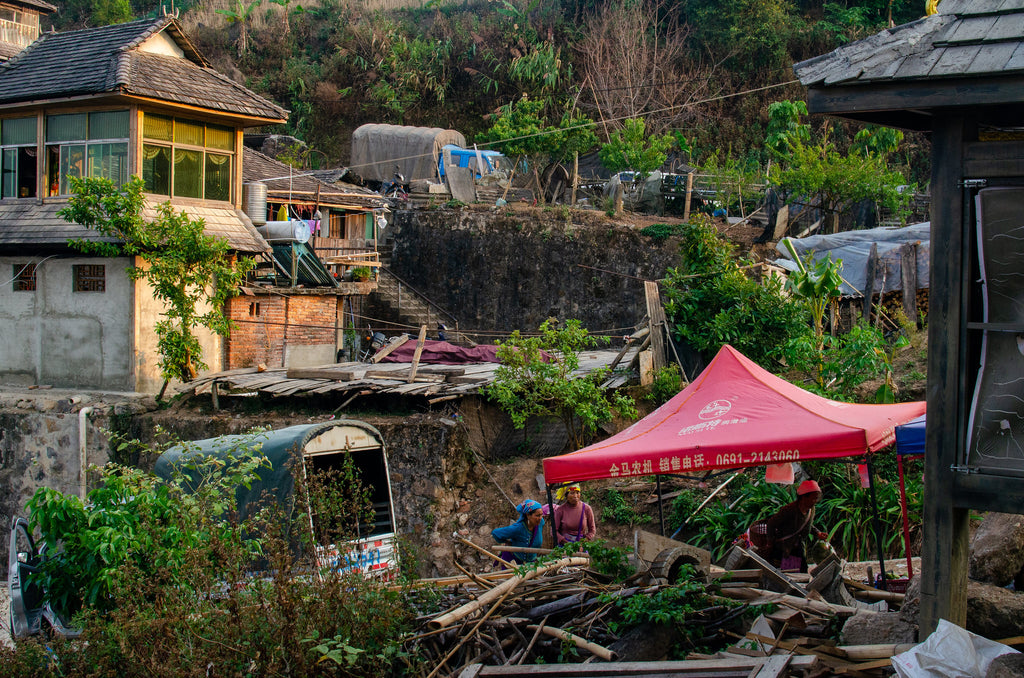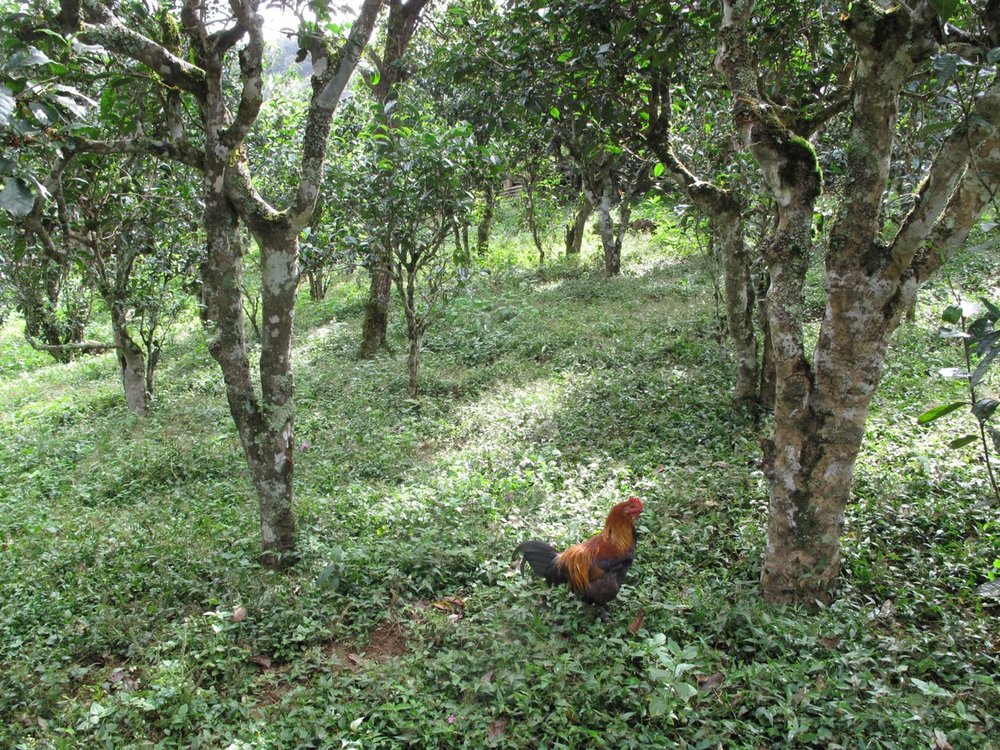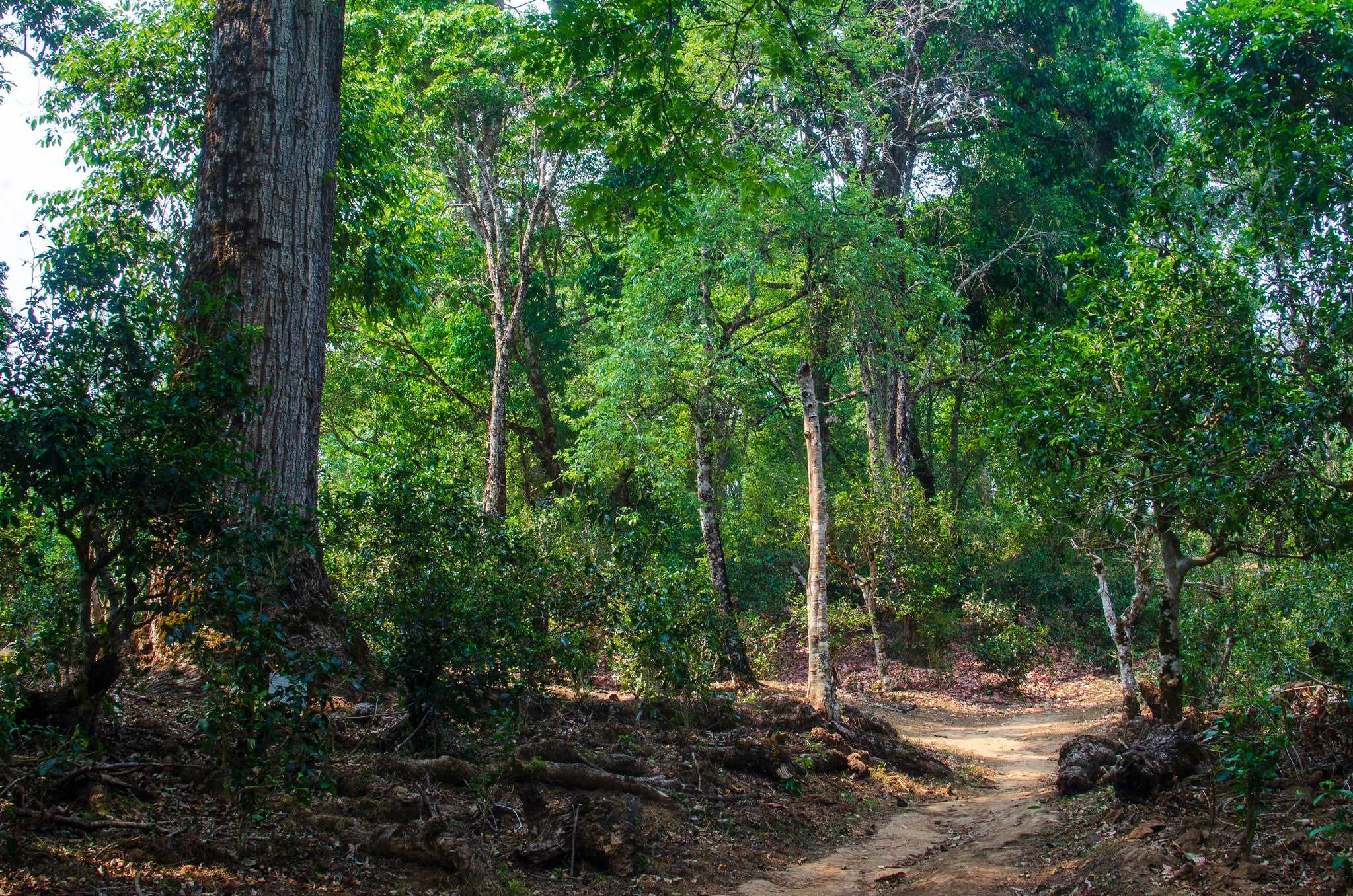Pu-erh's Pristine Garden: The Charm of Jingmai Tea

This September, UNESCO designated Jingmai Mountain, in China's Yunnan Province, as one of its new world heritage sites. It's a rare honor for a traditional tea region—the Wuyi cliffs and Hangzhou West Lake area are among the few others—and the designation is a crowning achievement for Jingmai tea boosters who have campaigned for years toward this goal.
Jingmai is a special place. With a rich regional terroir, it's one of our favorite sources of pu-erh tea, and the mountain's old-growth tea forests are well worth international recognition. We most recently visited Jingmai in 2019 to meet the maker of our Jingmai Old Forest, and wander the pristine woodlands where tea has grown in the wild for thousands of years. The Camellia sinensis tea plant is native to Yunnan, and its indigenous populations have enjoyed a long history with tea as a drink, a traditional medicine and more recently, a crucial source of income. Legends say that spirits live among the trees in Jingmai's ancient forests; when walking past tea trees that have lived for centuries before you were born, it's easy to see why.

Pu-erh is the local drink of ethnic communities in and around Yunnan. Its processing begins much like a Chinese green tea, with hand-picked leaves tossed in a wok to halt oxidation, but the leaves are fired and dried at a lower temperature to preserve microscopic flora and some oxidizing enzymes. The result is a tea that naturally ferments and oxidizes over time. When young, sheng ("raw") pu-erh brews like a bold and bracing green tea with extra depth; as it ages over the years, it develops notes of fruit, leather and earth, its liquor changing from straw yellow to deeper shades of orange and amber.
As with any other tea, quality pu-erh needs quality raw leaves, and this is where Jingmai farmers excel. Jingmai's tea forests are among the most pristine we've ever seen. Camellia sinensis grows here the way it was meant to, as part of a diverse ecosystem with minimal human intervention. These tea trees can easily grow 10 to 20 feet, and it's incredible to watch skilled pluckers climb their way up winding branches with little more than flip flops and a step stool. Older trees' roots extend deep into the soil, drawing minerals up into the leaf that add to a tea's depth and character.

Tea-making families in Jingmai hold ancestral ownership claims over specific trees, which are overseen by individual villages. This is a common model in many Yunnan tea communities, but Jingmai farmers in particular have shown a commitment to preserving the natural integrity of their old-growth forests. Farther south in Yunnan, where pu-erh's rising popularity has spurred booming economic prosperity, we've seen streams littered with trash from passersby; such occurrences are rare in Jingmai. Village decrees also enforce the use of traditional architectural styles in buildings in the center of town, which makes for a breathtaking sight as you emerge from the forest.
Jingmai's pu-erh teas are known for an elegant floral flavor and spicy-sweet notes of honey. That's a big generalization, though it's certainly true of our Jingmai Old Forest, a traditional sheng pu-erh made by an ethnic Dai family that has produced tea for generations. Made from old tea trees grown at high elevation in Jingmai's subtropical forests, it boasts a strong mineral complexity that reminds us of pine resin. The brew coats the mouth with a sticky, nectar-like sweetness, and we've found this tea has a way of warming and energizing the body. A product of the spring 2014 harvest, Jingmai Old Forest is still considered a "young" pu-erh, but nine years of aging have bestowed a clarity of flavor and weighty golden richness. We're excited to see how it will develop in its second decade of aging.

Pu-erh collectors should also seek out our 1-kilogram Jingmai Bricks, made on a different family farm on the mountain. The 2017 vintage is a tightly pressed sheng pu-erh tea made from a mix of young and older leaves; our 2004 version is a shu ("ripened") style that's designed to mimic years of aging at an accelerated rate. This tea underwent a lighter fermentation than typical modern shu pu-erh teas, so it could develop additional complexity as it ages.
What can Jingmai expect from its new UNESCO honor? Higher prices for new leaves, for one, and likely a boost in agricultural tourism, which continues to be a growing industry in the region. As for the rest, we'll have to see—and taste. Jingmai's tea trees have been around long before tea traders and tourists started trodding through; we hope they live long past us as well.
